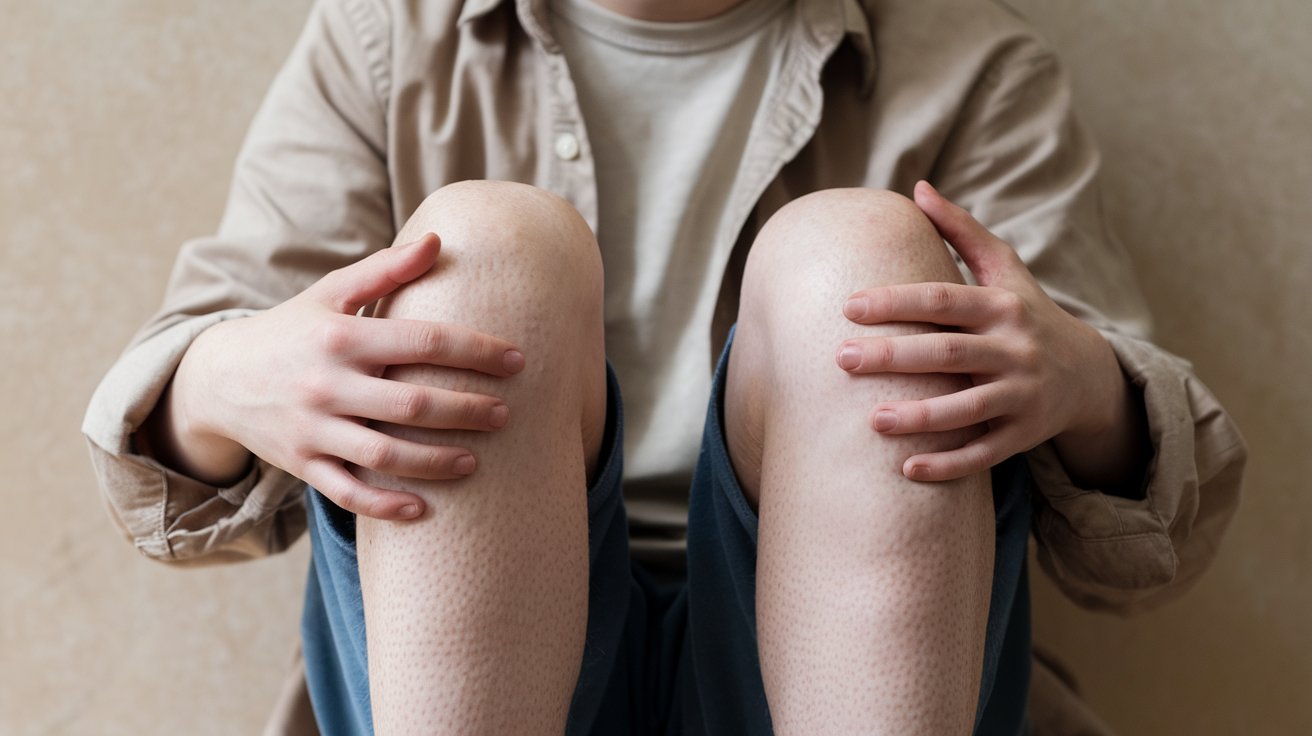
Mesomelic Dysplasia Skin Dimples might sound like a complex medical term, but it refers to a rare genetic condition affecting bone growth. Mesomelic dysplasia causes shortened limbs, particularly in the middle parts like the forearms and lower legs. One unique feature often seen in individuals with this condition is the presence of skin dimples over the affected bones. These dimples are not just cosmetic but can indicate underlying bone abnormalities. Understanding this condition can help in recognizing its signs early and seeking appropriate medical care. Let's dive into 30 intriguing facts about Mesomelic Dysplasia Skin Dimples to shed light on this rare disorder.
Key Takeaways:
- Mesomelic dysplasia affects bone development, leading to shortened limbs and unique physical traits. Genetic testing and early diagnosis are crucial for better management and intervention strategies.
- Individuals with mesomelic dysplasia may exhibit skin dimples, along with other physical characteristics. Support groups, educational accommodations, and advocacy efforts play a vital role in improving understanding and support for those with this condition.
What is Mesomelic Dysplasia?
Mesomelic dysplasia is a rare genetic disorder affecting bone development, particularly in the limbs. It often results in shortened bones, leading to a variety of physical characteristics and challenges. Here are some intriguing facts about this condition.
-
Mesomelic dysplasia primarily affects the middle parts of the limbs, such as the forearms and lower legs.
-
The condition is usually inherited in an autosomal recessive pattern, meaning both parents must carry the gene.
-
There are several types of mesomelic dysplasia, each with unique genetic causes and physical manifestations.
-
One common type is Langer mesomelic dysplasia, which involves mutations in the SHOX gene.
-
Another type, Nievergelt syndrome, is characterized by abnormalities in the tibia and fibula bones.
Symptoms and Physical Characteristics
Individuals with mesomelic dysplasia exhibit a range of symptoms and physical traits. These can vary widely depending on the specific type and severity of the condition.
-
Shortened limbs are a hallmark of mesomelic dysplasia, often noticeable at birth.
-
Some individuals may have bowed or curved bones, particularly in the arms and legs.
-
Joint abnormalities, such as dislocations or limited range of motion, are common.
-
Facial features can also be affected, with some individuals having a prominent forehead or a flattened nasal bridge.
-
Growth delays are typical, leading to shorter stature compared to peers.
Diagnosis and Genetic Testing
Diagnosing mesomelic dysplasia involves a combination of physical examinations, imaging studies, and genetic testing.
-
X-rays are often used to identify characteristic bone abnormalities.
-
Genetic testing can confirm the diagnosis by identifying mutations in specific genes.
-
Prenatal diagnosis is possible through ultrasound and genetic testing of the fetus.
-
Early diagnosis allows for better management and intervention strategies.
-
Genetic counseling is recommended for families with a history of mesomelic dysplasia.
Treatment and Management
While there is no cure for mesomelic dysplasia, various treatments and interventions can help manage symptoms and improve quality of life.
-
Physical therapy is essential for maintaining joint function and mobility.
-
Orthopedic surgery may be necessary to correct bone deformities or stabilize joints.
-
Assistive devices, such as braces or orthotics, can aid in mobility.
-
Regular monitoring by a multidisciplinary team is crucial for addressing the diverse needs of individuals with mesomelic dysplasia.
-
Pain management strategies, including medications and physical therapy, can help alleviate discomfort.
Skin Dimples and Other Unique Features
Mesomelic dysplasia can also present with unique skin features, such as dimples, which are often overlooked.
-
Skin dimples are small, shallow indentations that can appear on various parts of the body.
-
These dimples are typically harmless but can be a cosmetic concern for some individuals.
-
The exact cause of skin dimples in mesomelic dysplasia is not well understood.
-
They may be more common in certain types of mesomelic dysplasia, such as Langer mesomelic dysplasia.
-
Skin dimples can sometimes be mistaken for scars or other skin conditions.
Living with Mesomelic Dysplasia
Living with mesomelic dysplasia presents unique challenges, but many individuals lead fulfilling lives with the right support and resources.
-
Support groups and online communities can provide valuable emotional support and information.
-
Educational accommodations may be necessary to address learning or physical challenges.
-
Occupational therapy can help individuals develop skills for daily living and independence.
-
Advocacy and awareness efforts are crucial for improving understanding and support for those with mesomelic dysplasia.
-
Advances in genetic research hold promise for better treatments and potential cures in the future.
Final Thoughts on Mesomelic Dysplasia Skin Dimples
Mesomelic Dysplasia Skin Dimples, a rare genetic condition, affects bone growth and skin. Understanding its symptoms, causes, and treatments can help those affected manage their condition better. Genetic mutations, particularly in the SHOX gene, play a significant role in this disorder. Early diagnosis and intervention are crucial for improving quality of life. Treatments often involve a combination of physical therapy, orthopedic interventions, and sometimes surgery. Support from healthcare professionals, family, and community can make a big difference. Awareness and education about Mesomelic Dysplasia Skin Dimples are essential for fostering a supportive environment. By staying informed and proactive, individuals and their families can navigate the challenges posed by this condition more effectively. Remember, knowledge is power, and with the right information, managing Mesomelic Dysplasia Skin Dimples becomes a bit easier.
Frequently Asked Questions
Was this page helpful?
Our commitment to delivering trustworthy and engaging content is at the heart of what we do. Each fact on our site is contributed by real users like you, bringing a wealth of diverse insights and information. To ensure the highest standards of accuracy and reliability, our dedicated editors meticulously review each submission. This process guarantees that the facts we share are not only fascinating but also credible. Trust in our commitment to quality and authenticity as you explore and learn with us.
